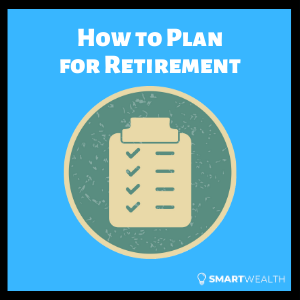Planning for your retirement in Singapore is not an easy task, especially when you’re just starting out.
Where do you even start?
No worries, it only gets better when you put more bits and pieces together.
To see the full puzzle, that’s where this introductory guide to retirement planning comes in..
This guide serves to give the skeletal big picture. To explore even deeper, you can click on the relevant links in the various sections.
Let’s begin!
What Does Retirement Look Like to You?
When there’s no goal in mind, you can’t create a roadmap to achieve it.
A simple “I want to be able to retire at 65 years old” is not good enough.
What you want for retirement should be 10 times more elaborate than that.
Here are some examples of what people want when they think of retirement:
- Sufficient savings, investments and income till the end days
- No outstanding debts
- Major financial commitments (e.g kid’s education) have been catered for
- Have the option (and not the need) to work
- Have a home where property loans are paid for or rental is covered
- Healthcare insurance covers medical needs in old age
- Ability to leave a legacy behind for dependants
- Travel and explore the world
- and many more..
It seems like there are many things to think about, but this process is very important.
Don’t get carried away and get caught in the loop of just wanting though..
The necessary action to convert those wants into reality is only through proper retirement planning.
SIDE NOTE When was the last time you conducted thorough financial planning or reviewed your finances? In this day and age in Singapore, doing so will absolutely improve the quality of life for you and your loved ones. Here are 5 reasons why financial planning is so important.
The 1 Reason Why Retirement Planning Is Important
Why is thinking about retirement often neglected?
It’s because you’re planning for something that is so far out, that you can’t really see it. And subconsciously, it loses priority.
This happens because of ..
Time.
We naturally think that we still have a lot of time left – decades. And because of that, we procrastinate doing anything about it, and continue to enjoy..
.. until it’s too late.
You see, saving for retirement is a marathon and not a sprint.
If you lack the time, no matter how hard you sprint at the end, you’ll never win the race.
Not only that.
Without doing anything, the journey only gets tougher as the costs of living will rise with time. And you’re also missing out on the effects of compounding.
Think about it, for those who don’t have the luxury of time, they have to either continue working into their old age or reluctantly reduce the standards of their desired retirement lifestyle.
So if you’re exposed to retirement planning (like now), do take some time and action to do something about it.
Let’s Get the Basics Down First
Ready to save for retirement?
Hold your horses.
While most people are hastier to start saving and investing, one aspect of financial planning is often ignored or overlooked.
That’s insurance protection, and it should take precedence.
Why?
When you’re working, your income becomes the “core of the earth” that provides the ability to spend on whatever money can buy – essential and/or non-essential. It also enables you to save, and use those savings to invest.
Here are examples of what your income is used for:
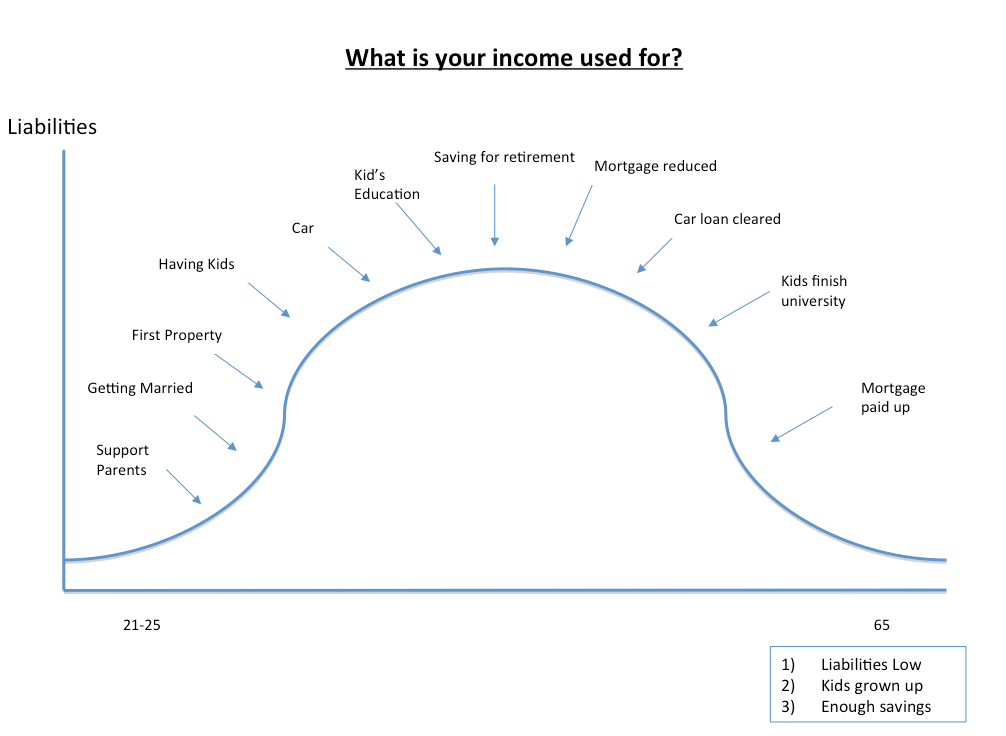
If you lose this income without adequate insurance coverage, it’s almost likely that your hard-earned savings/investments are not enough to cover for expenses in the long run. What’s going to happen then?
Unfortunately, most Singaporeans are underinsured.
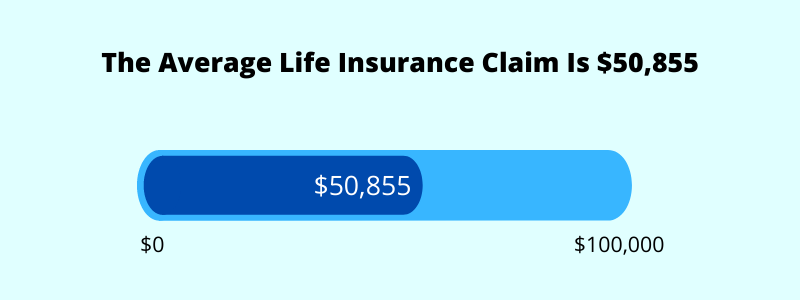
But if you do have sufficient life insurance coverage, life for you and your family can continue to go on. How much life insurance is enough? Find out with this calculator.
Common life insurance plans: term insurance, whole life insurance, and early critical illness insurance.
For Singaporeans, there are also the national healthcare insurance plans that cater to long term care (CareShield Life and ElderShield) and hospitalisation needs (MediShield Life and the Integrated Shield Plan).
Whether you’re young or old (during your retirement years), medical insurance remains foundational, especially when healthcare costs are high (and increasing). So do ensure you’re sufficiently covered.
How Your CPF Accounts Play a Part in Your Retirement
For most Singapore Citizens and Permanent Residents, part of our retirement funds will come from our CPF accounts.
So although it can be complex, it’s vital to have a basic understanding of how CPF for retirement works.
Here’s a simplified overview:

At age 55, your Special Account and/or Ordinary Account, up to the Full Retirement Sum, will be transferred into a newly created Retirement Account.
The amount that you’re able to withdraw will depend on how much CPF savings you have and whether you own an eligible property.
The monies in your Retirement Account will stay inside earning interests until your hit the Payout Start Age (65-70), and that amount will then be used to enter CPF LIFE which provides you monthly payouts for life.
That’s a simple overview, but it’s slightly more complicated than that. For more details, check out this article.
Supplementing Your Nest Egg with the Supplementary Retirement Scheme (SRS)
For the higher income earner, the Supplementary Retirement Scheme (SRS) can be a great way to get more out of national schemes.
The 2 benefits of SRS: tax relief and supplementing retirement income.
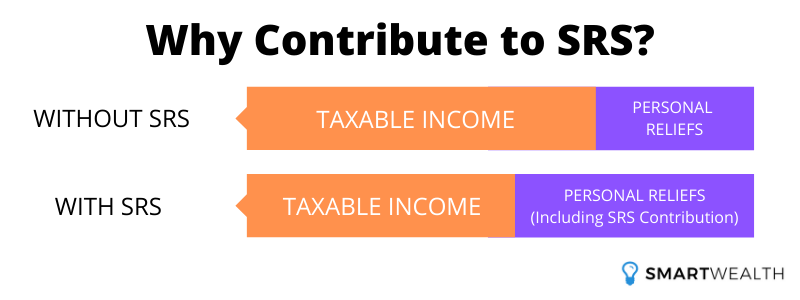
While you’ll need to use cash to deposit into your SRS account, that amount is a tax relief that can reduce your total taxable income for that year.
And because monies in your SRS account only earn 0.05% interest, account holders usually capitalise on some of the best SRS investment options to get higher potential returns. If you prefer a more conservative approach, you can look at single premium annuities that accept SRS funds.
Are the CPF Schemes Enough?
As you know, one of CPF’s main objectives is to provide the basic retirement needs.
And because CPF is also used for other needs such as housing, the liquidity of it indirectly reduces the amount of retirement funds you have at the end of the road.
Because of this reason, do you think CPF is enough for your retirement?
According to Josephine Teo, Minister of Manpower, here’s the average CPF payout:
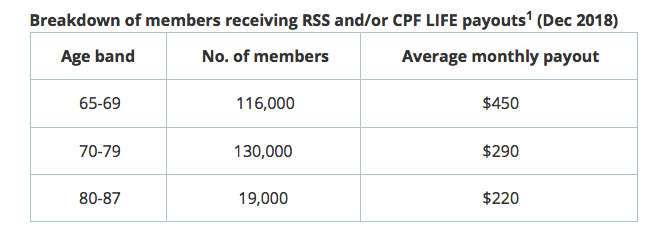
These payouts are from previous batches but with improvements over the years, future batches are expected to have higher payouts.
As for the average household expenses per member, it’s at $1,154/month (only households comprising of non-working persons age 65 and above; across all dwellings).
At the end of the day, averages don’t matter, you should only look at what are your expected expenses in the future, and your current and projected financial resources.
Then if you think your CPF isn’t enough, you can optimise and increase your CPF funds using various methods.
However, if you’re the sort that doesn’t want to put everything into one basket, then you’ll have to create alternate assets via various retirement investment options.
Creating alternate assets is even more important for these groups of people:
- Self-employed
- Business owners
- Foreigners
This is because contributing to CPF is a form of forced saving. If you’re not required to contribute, there won’t be a safety net created for you automatically. Therefore, while you’re building your wealth, don’t forget to find something that “replaces” CPF.
7-Step Process to Planning for Your Retirement
The process of planning for retirement can be relatively structured.
Here are the 7 steps:
- Decide What Are Your 2 “Stop Ages”
- Think of Your Desired Retirement Lifestyle and Decide How Much You Need per Month
- Assessing Your Current Financial Health
- Input Your Figures into a Retirement Planning Calculator
- Settle on a Broad Asset Allocation
- Make Wise Investment Choices
- Track and Monitor Along the Way
.. and more details of each step.
1) Decide What Are Your 2 “Stop Ages”
The first “stop age” is to decide at what age to stop receiving retirement income (i.e what age you think you’re going to live till).
Well, obviously we can’t predict when we’re going to leave this world, we do need to settle on an age, so that we can project how long to receive a retirement income.
That age could very well be life expectancy.
In Singapore, it’s currently at 83.6 years (both genders).
And it’s expected to increase till 85.4 years in 2040.
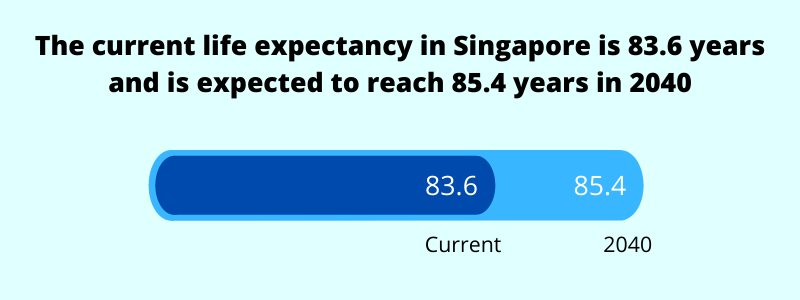
The next “stop age” is the age you wish to stop working.
If you have no clue when, you can choose to defer to the official retirement age in Singapore, which will be 65 years old by 2030.
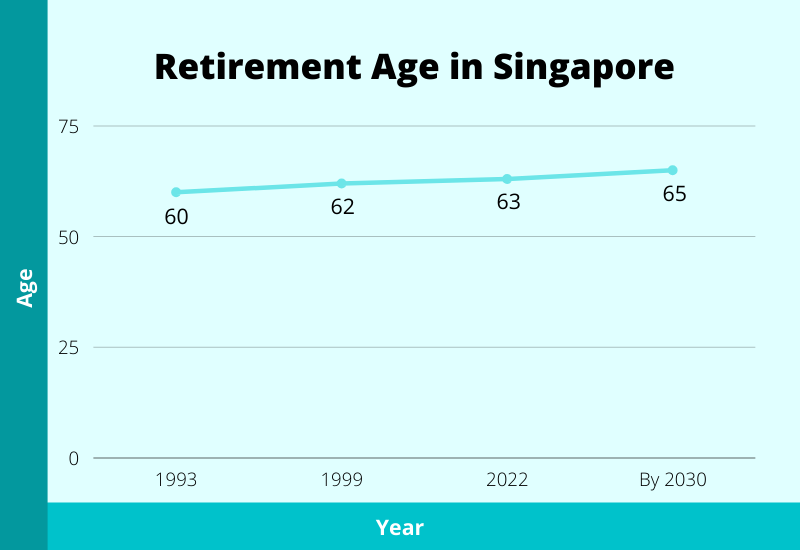
For those of you who don’t wish to stop working because you love what you’re doing, do know at some point, old age and bad health will catch up.
Deciding an age will give you the option to stop work if needed.
And for those who wish to retire earlier (e.g FIRE), the process to plan for retirement is still the same. You’re still planning to hit a certain financial goal by a certain deadline. And the core principles of earn more, save more and invest more, still apply.
2) Think of Your Desired Retirement Lifestyle and Decide How Much You Need per Month
Earlier on, you were asked what does retirement look like to you.
Have you thought long and hard about it?
What type of lifestyle do you want? Minimalistic, Comfort, or Luxurious?
One of the most popular questions people ask is how much you need to retire in Singapore. And while that’s a valid question, it shouldn’t matter that much.
You should only care about your expected expenses according to what you want, and that will determine how much you need during retirement.
You’ll need to ask yourself a fairly long list of questions on what your expenses will be like.
For example:
- do you intend to travel? How many times per year? Would you bring the whole family?
- what do you intend to do throughout the whole day?
- where do you want to eat your meals? Coffeeshop? Restaurants?
- and many more..
Doing this exercise will determine how much you’ll need (in today’s value).
DID YOU KNOW? According to a survey conducted by MoneySense, about 3 out of 10 Singapore residents aged 30 to 59 had not started planning for their future financial needs. This isn't surprising because personal finance can seem complicated and daunting. But really, there are only a few things that you should focus on. Learn how to significantly improve your personal finances with the 7-step "wedding cake" strategy today.
3) Assessing Your Current Financial Health
Most of us don’t track what we have. And even if we do, it’s not updated regularly.
The important financial numbers to know are your assets, liabilities, income, and expenses.
Knowing where you stand is critical because only then you’ll be able to measure and improve.
Apart from these reasons, it’s also about safekeeping financial information.
Imagine if one day, death or mental incapacity happens, and you don’t have any of such information available to your family, your hard-to-find assets (e.g bitcoins) can’t be recovered.
For these purposes, you can check out our free excel template, FinSnap. It can help you start tracking and safekeeping such information.
4) Input Your Figures into a Retirement Planning Calculator
So when you’ve done the previous steps, you’ll have this information:
- desired retirement age
- age to stop receiving retirement income
- how much expenses you’ll need per month (in today’s value)
- your current (and projected) financial resources
It’s time to put all this information into a retirement planning calculator which can provide you with estimates.
The calculator should take into consideration inflation, and provides further insights.
If you’re young, you’ll likely see a retirement shortfall.
That could mean various things such as needing to earn more, save more, or invest more.
5) Settle on a Broad Asset Allocation
If you have a retirement shortfall and/or excess cash, and you wish to put them into good use, you should first decide what type of assets/investments you should hold.
Factors such as time to retirement, your risk appetite and your expected returns should all be taken into consideration.
A simple asset allocation would be to decide how much percentage to hold for the below 3 types of assets:
- emergency funds (e.g cash at the bank)
- non-volatile assets (e.g bonds, CPF, private annuities)
- volatile assets (stocks, ETFs, unit trusts)
Emergency funds usually give the lowest interests but are very liquid.
Non-volatile assets are stable and provide higher potential returns.
Volatile assets have the risks of capital loss and volatility, but they can provide the highest potential returns.
Here’s a common retirement investment strategy:
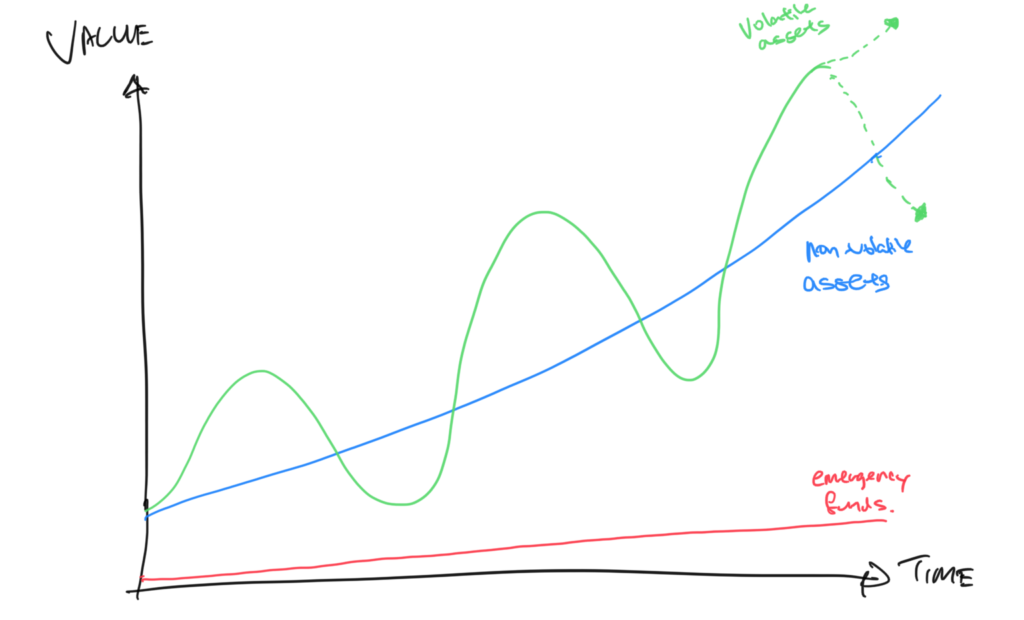
When you’re young, you can afford to take higher risks with volatile assets for potentially higher returns, just because your time horizon to retirement is much longer than someone older. So chances of your investments recovering from a downturn are higher. You can also start to build a foundation with non-volatile assets.
As you get older, your time horizon becomes shorter, and hopefully, with your volatile investments, they’ve gained in value. You may want to sell off a bigger portion of them and put them into non-volatile assets, to lock in profits.
That being said, as everyone is different, other factors such as your current financial situation, risk preferences, etc, must be taken into consideration. Therefore, there’s no one-size-fits-all.
6) Make Wise Investment Choices
Non-volatile and volatile assets are very broad terms.
Where exactly do you put your money in?
That’s when retirement investment options come in.
Depending on how much risk you can take, you can narrow down your options and ultimately make a decision.
7) Track and Monitor Along the Way
So now, you’ve got a goal with a deadline.
And a starting point.
Even if you’ve made some investment decisions, it’s not the end.
Because change is constant, financial situations and goals will need to be regularly reviewed.
This ensures that whatever you’ve implemented still aids in your journey. If you realise that you’re falling behind, then you should adjust accordingly.
In this entire process, in my opinion, step 6 – making wise investment choices – is the most important. And the rest of this article would touch more on that.
What Should You Focus Your Efforts On
In this technological world, it’s easy for marketing messages to bombard our lives.
Because of this, we tend to be easily distracted and can lose sight of what’s important from time to time.
It’s a human thing.
When many tasks demand our attention and we pay equal attention to all, tasks that are of higher importance tend to get sidetracked.
Same thing when dealing with finance.
With so much information, useful at times, we tend to put them on the same level. However, there are only a few things that can truly move the needle.
If we were to condense everything, I believe it boils down to these 3 aspects:
- Earn More
- Save More (Spend Less)
- Invest More
In my opinion, earning more holds the heaviest weight. When you’re able to command a high income, it’s easier for everything else to fall in place.
So if you were to ask me what type of investments – time, money and effort – to make, I’d say the priority should go to building your career and/or business first.
You must be an expert in what you do.
This is especially so when you’re in the early stages of your life when the wealth you’ve accumulated may not be significant enough.
ILLUSTRATION
Early stage in life
Wealth accumulated: $100,000
Concentrating on investments to increase your wealth from 5% to 10% returns: Extra $5,000
Later stage in life
Wealth accumulated: $1,000,000
Concentrating on investments to increase your wealth from 5% to 10% returns: Extra $50,000
You could do both at the same time which is totally up to you, but to excel in both career and investments will require lots of resources. You can also consider outsourcing investing.
Why Should You Invest
Having said that your focus should be on your career and/or business..
If you’ve done them well, there will be excess money lying around.
Outside of short term financial goals and emergency funds, you should still do something about it – investing.
Investing doesn’t mean to put them all in stocks and its equivalent.
It just means to make better use of your excess cash with various alternatives, depending on your risk appetite.
Doing this will enable you to capitalise on time and the compounding effect of interest.
Here’s an illustration to show how much your retirement fund will be at age 65 if you start early:
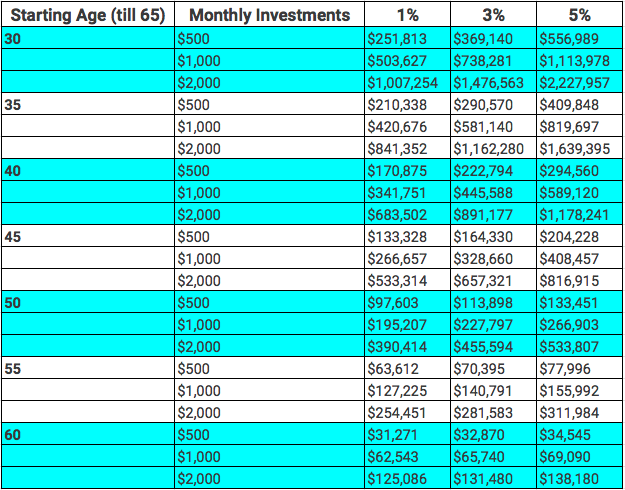
Where Should You Park Your Money
Depending on your risk appetite and expected returns, there’s a whole range of solutions available.
Here are some retirement investment options:
- Savings Accounts
- Fixed Deposits
- Bonds
- Retirement Plans (Annuities)
- Individual Stocks and Shares
- Index Funds, ETFs, and Unit Trusts
- Real Estate Properties and REITs
They all have their individual characteristics. And sometimes it may not be easy to narrow down to one.
It depends on where you’re at right now, your financial situation, etc. Only upon further look can one be more certain.
Certain solutions are designed specifically for retirement purposes like the retirement annuity plans (similar to CPF LIFE). They can act as a diversification and a way to supplement retirement income. They’re often capital-guaranteed upon maturity, and provide guaranteed and non-guaranteed income.
Life Doesn’t Always Go the Way You Want It To
While we can do our best to plan for our retirement, there will be hiccups along the way.
Small hiccups can be managed with insurance (mentioned earlier).
But death will likely to be one of the worse things that can happen, especially if it’s premature.
If you didn’t get your finances in order, it can leave a mess for your family members.
This is when estate and legacy planning comes in.
You can specify how your assets will be distributed when death happens through a variety of tools:
This is to ensure that all your wealth will go to your intended beneficiaries, with the least amount of time and costs.
If these are not done, it’ll go according to the intestate succession act or Muslim law.
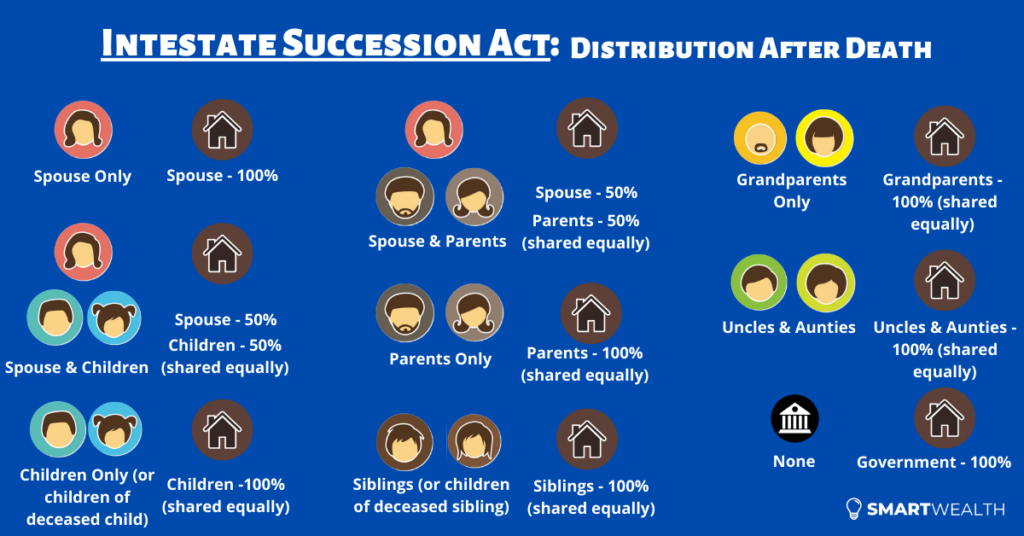
On the flip side, if you understand death is 100% guaranteed to happen, you can capitalise on it using legacy insurance plans that will give greater payouts upon death. Examples of such plans: term till 99 years old, single premium whole life insurance, 3G lifetime income plans and universal life insurance.
Also, being mentally incapacitated is equally disastrous.
And that’s when advance care planning comes in.
Tools such as the Advance Care Planning Workbook, Lasting Power of Attorney (LPA) and Advance Medical Directive ensure that proper decisions can be made by the right people when you’re unable to make one.
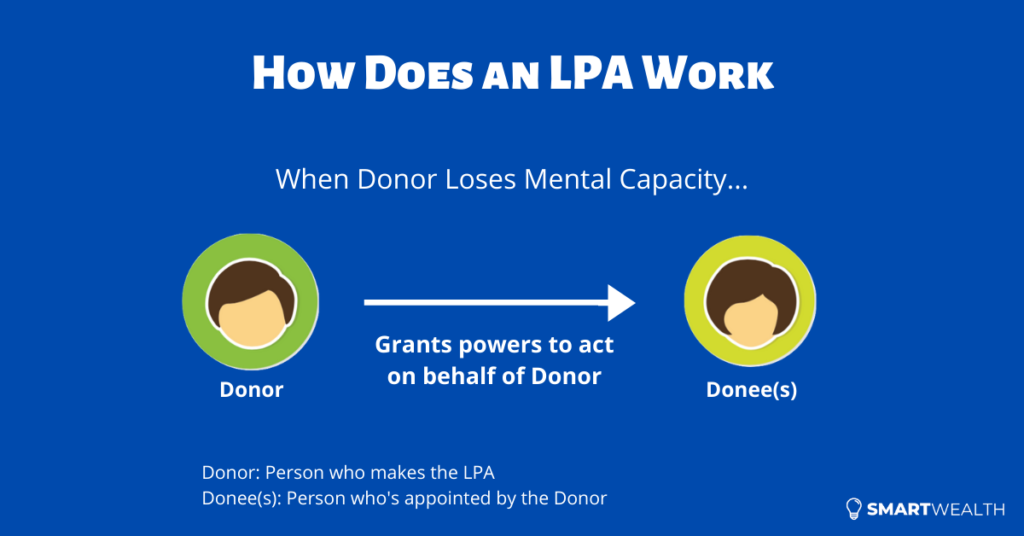
What’s Next?
The best age to start planning for retirement is always yesterday.
It’s always good to start early, even with the smallest of steps.
The first step you can take is to understand and learn a little bit more.
This introductory guide gives you a bigger picture of how to plan for your retirement.
To dig deeper, you can just go back to the sections you’re interested in, and click on the links to explore further.
If you don’t know where to start, here are some articles you may be interested in:
- How CPF for Retirement Works
- What is SRS and How Does It Work
- Retirement Planning Calculator: How Much You Need to Retire in Singapore
- Best Retirement Investment Options
